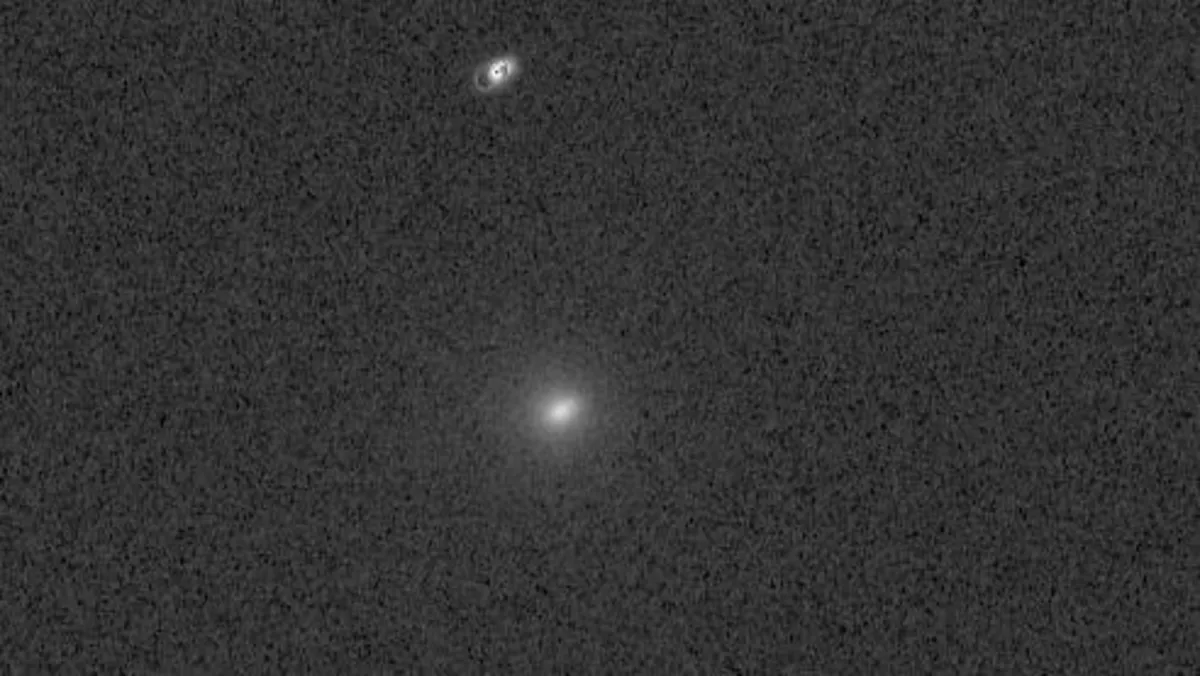
The interstellar comet 3I/ATLAS has made a remarkable return to visibility, emerging from behind the sun. Recent images captured by an astronomer at the Lowell Observatory in Arizona have provided evidence of this event. On Halloween, October 31, Qicheng Zhang, a postdoctoral fellow at the observatory, took what is believed to be the first optical post-perihelion photograph of this celestial visitor.
As of Sunday, November 2, Zhang confirmed that comet 3I/ATLAS can now be observed using small telescopes. He shared an example of this on his Cometary blog, stating that standard amateur telescopes should start picking up the comet across much of the Northern Hemisphere. For those interested in viewing this interstellar phenomenon, Zhang advises that all you need is a clear sky and a very low eastern horizon. "It won't look very impressive; it's just a smudge," he told Live Science, "but it will become increasingly visible over the next few days."
Since its discovery in July, scientists have gained significant insights into comet 3I/ATLAS. This comet is only the third interstellar object ever recorded and is traveling through our solar system at astonishing speeds exceeding 130,000 mph (210,000 km/h). Its trajectory is notably flat and straight, which is unusual for comets. The comet briefly vanished from Earth's view as it slingshotted around the sun, reaching its closest point—known as perihelion—on October 29, when it came within 1.4 astronomical units, or approximately 130 million miles (210 million kilometers), of the sun.
Even though the comet was obscured by the sun, researchers and amateur astronomers continued to monitor its trajectory using data from space telescopes. On October 28, Zhang and his colleague released a study on the preprint server arXiv, indicating that comet 3I/ATLAS underwent rapid brightening prior to perihelion and exhibited a distinctly bluer hue compared to the sun. This observation suggests that gas emissions may have contributed significantly to the comet's visible brightness near perihelion. Zhang noted that while the comet could still be brightening, further data is required to confirm this.
The Lowell Discovery Telescope is one of the largest telescopes capable of observing comet 3I/ATLAS shortly after perihelion. The comet is moving northward from our perspective, moving away from the northeastern horizon. Zhang mentioned that there is a window of opportunity to catch a glimpse of the comet during morning twilight, just before the sun rises and brightens the sky. He utilized a small telescope with a 6-inch lens to gather data about observational conditions ahead of his scheduled sessions with the larger telescope.
As comet 3I/ATLAS continues its journey away from the sun, researchers anticipate a wealth of information regarding its composition. As comets get closer to stars, they heat up, causing ice on their surfaces to sublimate into gas. This phenomenon allows scientists to learn more about the comet's makeup as it moves further from our sun.
While there has been some sensational speculation about comet 3I/ATLAS possibly being an alien spacecraft, the majority of astronomers agree that it is a typical comet from an unknown star system within the Milky Way. Some studies even suggest that this comet might be the oldest ever observed, potentially around 3 billion years older than the solar system itself. Preliminary research indicates that prolonged exposure to space radiation may have altered the comet, creating a thick irradiated crust that complicates efforts to trace its origins.
Regardless, the coming months promise a surge of new research and observations concerning comet 3I/ATLAS. As Zhang points out, "It is rapidly rising from the sun," and within a week, it is expected to be approximately 25 to 30 degrees away from the sun. By that time, numerous large telescopes worldwide will be able to track this fascinating interstellar traveler.